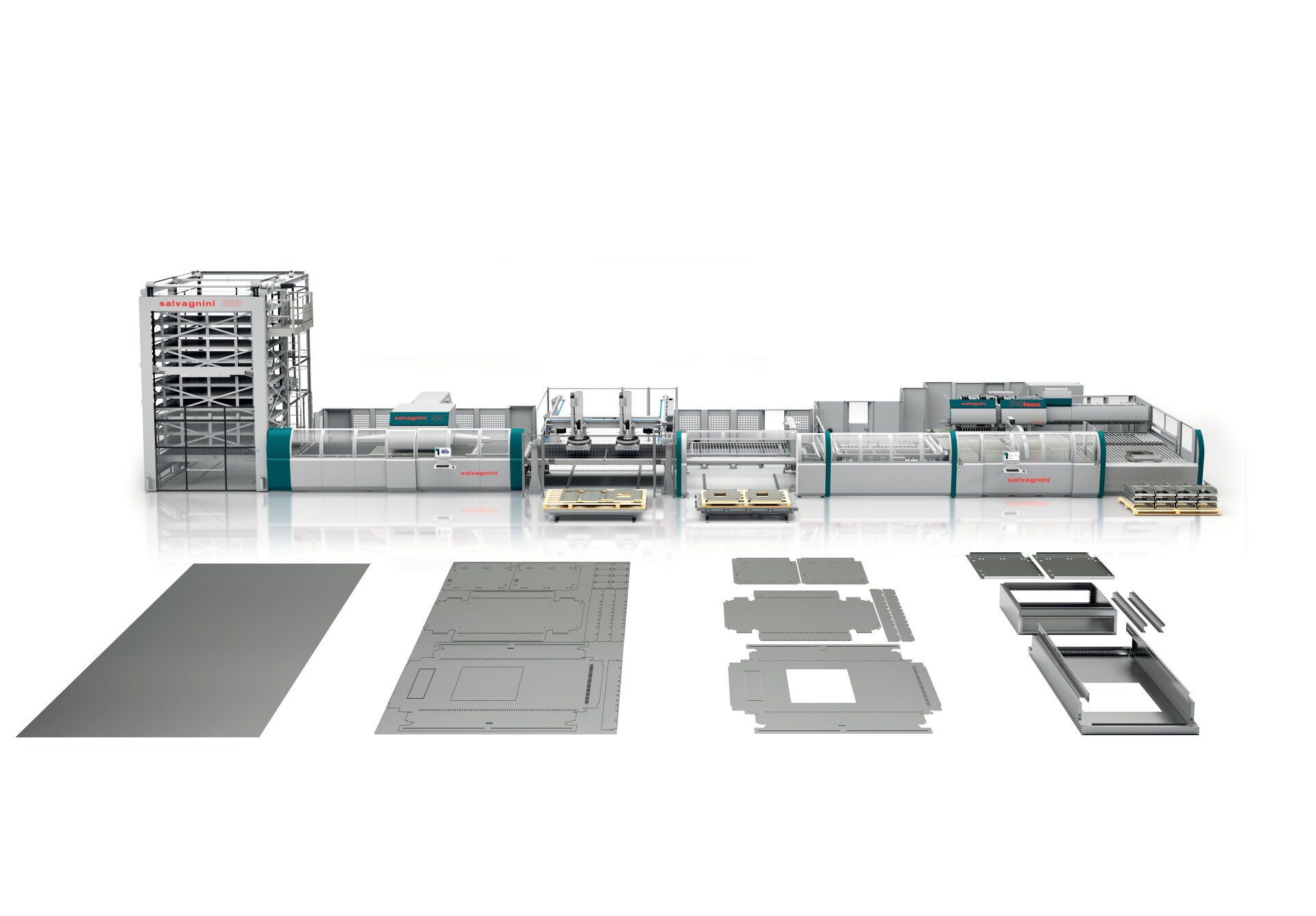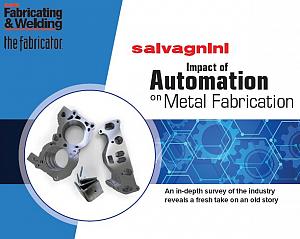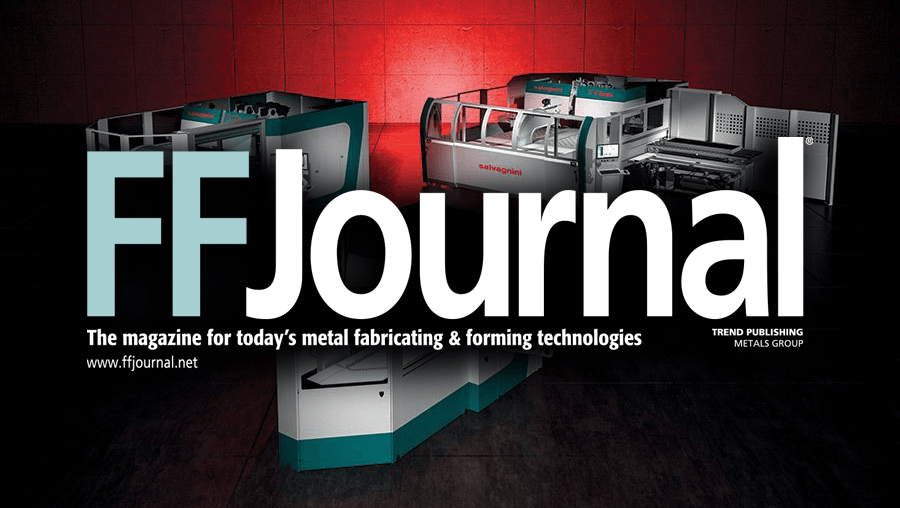The Future of Manufacturing Automation
Shop employees won’t be production workers.
They’ll be technology workers, and their talent will be a fabricator’s key differentiator.
If your job can be automated,
it one day will be.
In spring 2021 Salvagnini, The FABRICATOR, and Canadian Fabricating & Welding surveyed the metal fabricating industry, and 320 manufacturers and job shops revealed that the reality of automation is more complex than simple industry narratives. The lack of skilled labor might be a factor for some in pursuing automation, but a far greater factor is increased throughput, meeting customer demand for quick delivery, and competitive pricing.
Automation doesn’t always mean a company employs fewer people.
Technology has changed the worker demographic.
The Impact of Digitalization in Manufacturing
An in-depth survey on the industry reveals a fresh take on an old story
With Industry 4.0 in full swing,
production will be autonomous.
ABOUT THE SURVEY
The “Impact of Automation on Metal Fabrication” survey was sent to 19,114 subscribers of The FABRICATOR and Canadian Fabricating & Welding via email in late February and early March. Three-hundred and twenty completed the survey.
Automation has become ubiquitous,
from software that streamlines design and programming to machines that effectively set up themselves. Even within an industry as extraordinarily diverse as metal fabrication, nearly everyone is pursuing automation in one form or another.
But again, the popular narrative behind automation is
different from the reality. Consider the results here, describing the relationship between automation, revenue, and headcount. The popular narrative says that if you invest in automation, your revenue will rise faster than your headcount. That, it turns out, is an
oversimplification.
What’s going on here? As shown in the case studies, automation creates new jobs and new career paths. Many of these jobs involve work that occurs behind the scenes, before a job hits the floor. Automation minimizes or eliminates machine setups and minimizes the number of times work needs to be touched by a person. This causes
workpiece velocity to accelerate dramatically. Increased throughput improves cash flow and, ultimately, opens up new opportunities.
Those new opportunities might lead to new products that automation can scale up effectively. That way, the company can sell more without hiring more. In other cases, new opportunities might lead to new markets that require more personnel, either in the o.ce or certain shop floor positions.
Bottom line: Automation makes these opportunities possible.
Automation and revenue
-
During the past five years, your revenue has been more dependent on which of the following?
69% Employee Headcount
31% Automation
-
Have you invested in machine automation during the past five years?
87.5% Yes
12.5% No
-
Do you plan to invest in machine automation during the next five years?
92% Yes
8% No
-
Compared to five years ago, have most job applicants today come to you with more or less previous metal fabrication experience?
7% More Experience
66% Less Experience
27% Stayed the Same
-
Has modern automation made training the workforce harder or easier?
25% Harder
43% Easier
32% No effect either way
All this stems from MANUFACTURING automation technology
in the hands of talented people.
Giovanni Piccolo
Vice-President of project management and applications for Salvagnini.
Automation is a journey
“The automation process really defined the third industrial revolution,” says Giovanni Piccolo, vice-president of project management and applications for Salvagnini. “Automation met the need for higher volume, higher quality parts. Now we’re in the midst of the fourth industrial revolution. Workforce reductions are acting as a catalyst to drive people to look at automation and the use of robotics. Once they do, they see the advantage of being able to make higher cost parts more economically.”
The typical North American manufacturing narrative goes something like this:
Click the video below to hear more.

Salvagnini’s S4 + P4 line: Under the Hood
FIFTH WAVE MANUFACTURING looks at a system rather than a product.
Embracing digitalization in manufacturing at VANDER-BEND
Click the video below to hear more about their sheet metal fabricator automation process.

It’s true that with most automation,
fewer people touch the work as it flows through the plant. But automation also opens up opportunities, which in turn drive revenue growth. As further explained, the nature of those opportunities affect the correlation between automation and revenue.
Automation increases competitiveness at CasaSanta - Complete Baking Solutions
Click the video below to hear more.
Automation Drives Revenue
It's definitely true that automation can reduce the need for manual labor in a plant. However, it's important to note that automation also brings about new opportunities that can drive revenue growth. The specific nature of these opportunities will determine the correlation between automation and revenue.
If you're interested in exploring how automation can improve your production processes, reach out to our sales team. They can provide you with the valuable insights and show you how implementing automation can help you save both time and money. Don't miss out on the chance to optimize your operations and increase profitability. Contact our sales team, today!

salvagnini america inc.
27 Bicentennial Court
Hamilton, Ohio 45015 USA
513-874-8284
info@salvagnini.com
Salvagnini America Inc,








